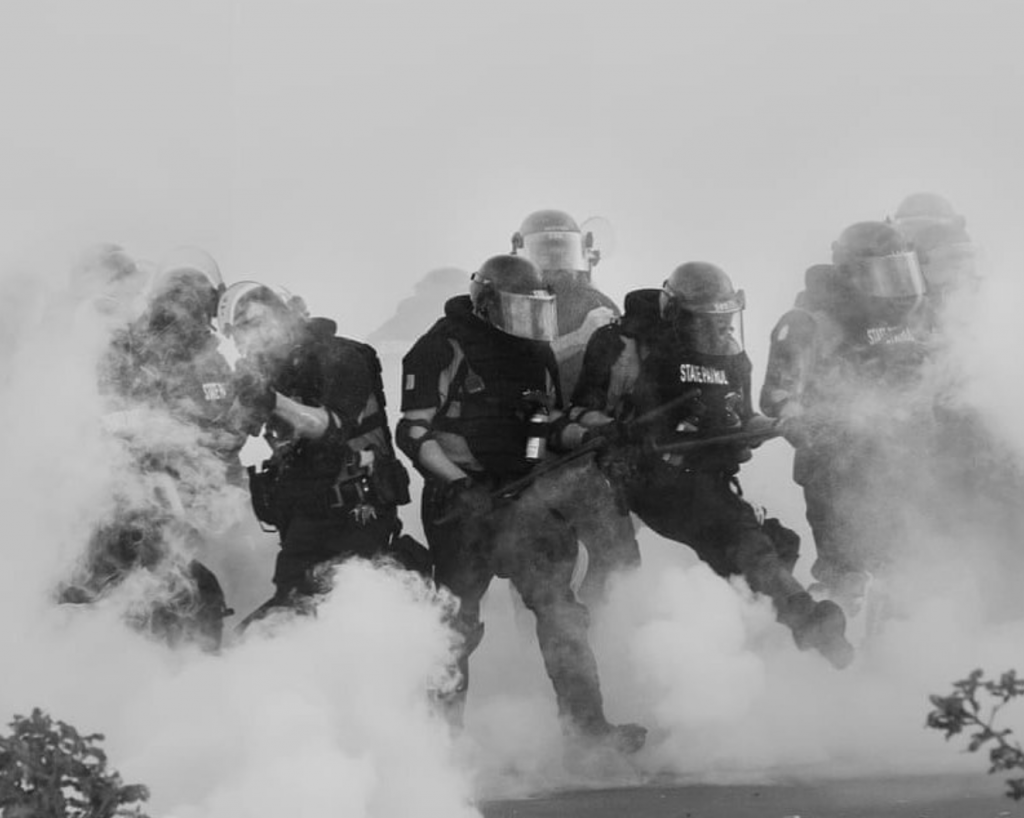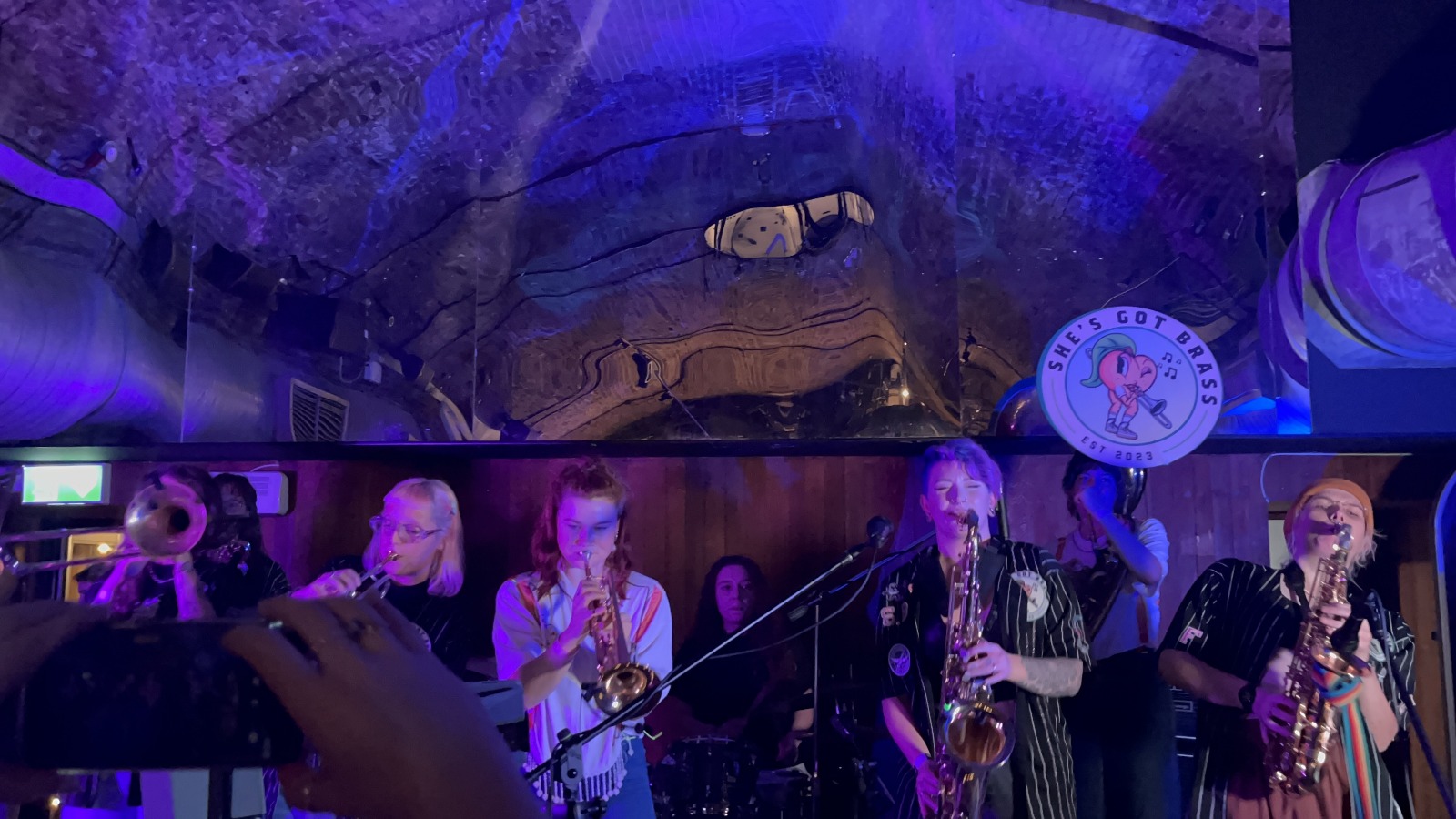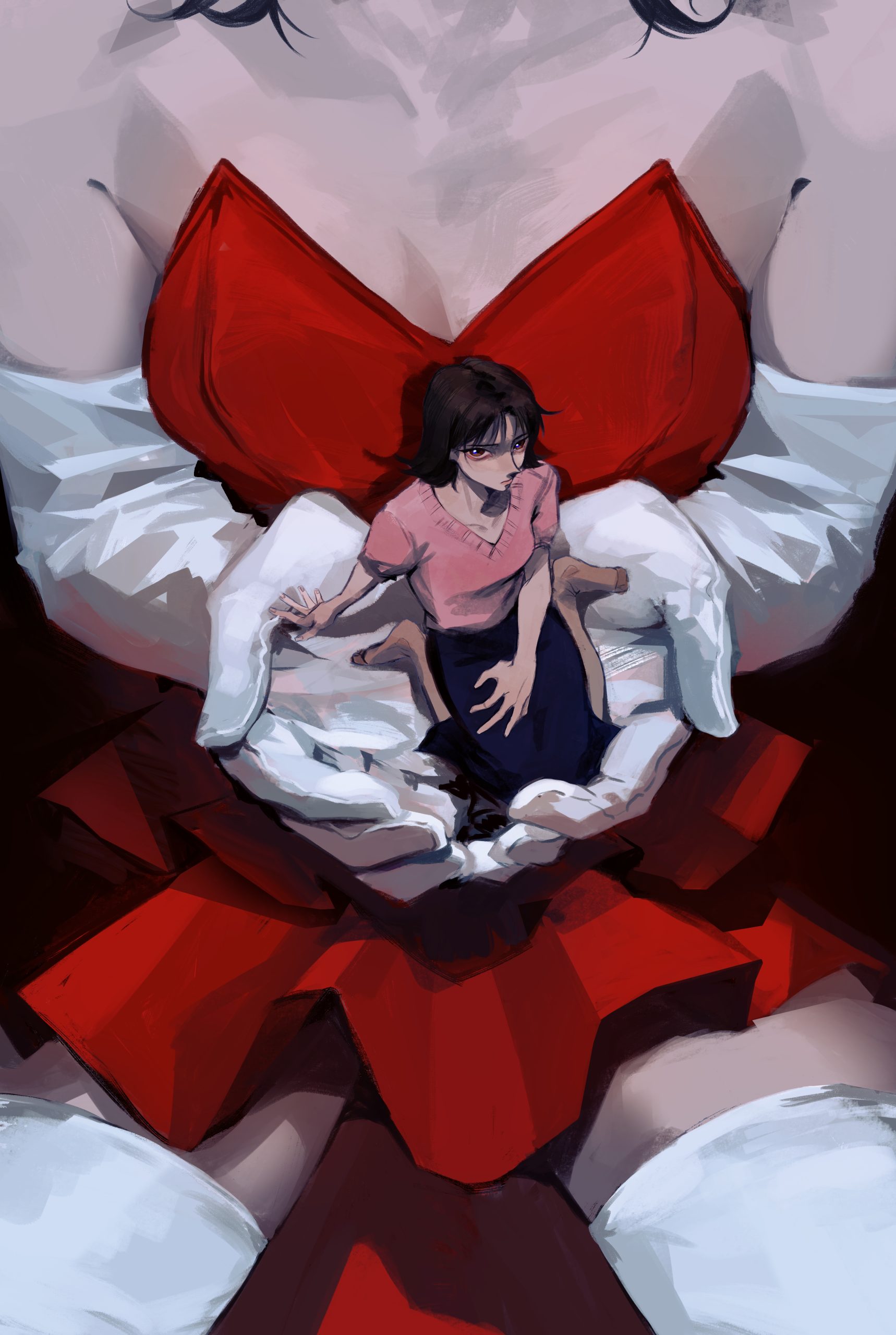By Namrata Menon
‘America in Crisis’ was devised in 1968, to chronicle the year’s fraught political arena and contextualise a broken America. Through photographs and other mixed media installations, Charles Harbutt, acclaimed photographer, and Lee Jones, of Magnum Photos New York, sought to lay crisis after crisis bare. One of its most poignant images comes from Bruce Davidson’s documentation of the Selma March, a non-violent 1965 protest for African-American voting rights. A young black man stares into the camera, with ‘VOTE’ written on his face. His expression seems somehow both defiant and resigned.
Saatchi Gallery’s 2022 revival of ‘America in Crisis’ juxtaposes the original project with work by modern photographers, again cataloguing a nation in freefall. Zora Murff’s ‘Fight’ and ‘Flight’ consists of two blurry images, as if live-streamed or retrieved from found footage, that paint a devastating picture. In ‘Fight’, a police officer stands with a gun pointed at an unarmed black man, who in ‘Flight’, is attempting to escape. The victim, Walter Scott, was killed in 2015 after a ‘routine’ traffic stop. 54 years later, tilted structures of race and power remain an unshakeable feature of the American political landscape.
Of course, the 2020s have new problems too: in a photograph by Leah Mills, the media crowds around Mark Zuckerberg at a Senate hearing (there have been so many, it wasn’t immediately clear which one); in Anastasia Samoylova’s ‘Pink Sidewalk’, palm trees lie against a building in Florida, the remnants of a hurricane. Some photos speak to the worsening imbalance between economic powerhouses and poor, remote ghost-towns – almost like a scene from Fargo, a ‘season’s greetings’ banner lies over an empty high street covered in snow. An interesting differential is the palpably distinct gaze in photographs of the Black Lives Matter protests, when viewed right after the older pictures from the civil rights movement; the modern photographers included in the exhibition are culturally more diverse. Their perspectives offer new, previously suppressed, points of view.
There is an interactive section at the end of the exhibition, which randomises sequences of photographs to emphasise the significance of the various ways in which we interpret images (with each new order telling a new story), and how easily we are influenced in our perceptions of media. In an interview, Sophie Wright, one of the curators, reiterated how this was in line with the original project’s mixed media presentation: the creators used a “gambling machine, which organised the pictures by chance. It was quite a statement”.
When you first walk in, the writing on the (literal) wall describes the USA as a beacon of hope, a refuge for all, a glowing meritocracy. Throughout, as this unravels, it is easy to feel both angry and helpless. While I have no real personal connection to the ‘American dream’, it is an idea that’s been a pervasive part of pop culture and the media I’ve consumed for much of my life. Wrangling with the less-than-desirable manifestations of this ideal is an uncomfortable experience, but perhaps a necessary one.
The exhibition does not draw parallels so much as it acts as a jarring reminder that not much has changed (and that maybe everything is worse). It was sometimes unclear which time period a photo was from, which I suppose is the point.



